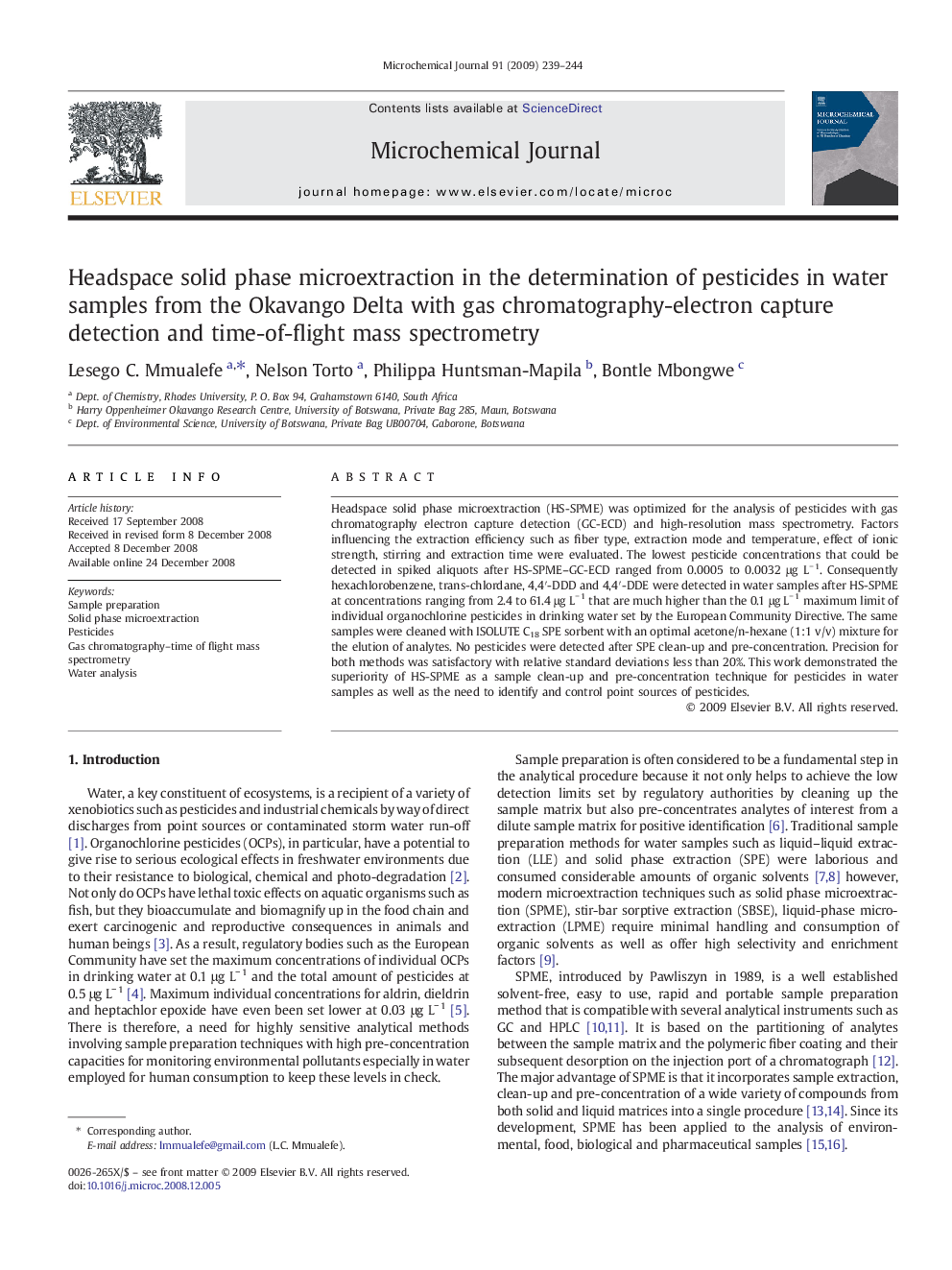| Article ID | Journal | Published Year | Pages | File Type |
|---|---|---|---|---|
| 1228168 | Microchemical Journal | 2009 | 6 Pages |
Headspace solid phase microextraction (HS-SPME) was optimized for the analysis of pesticides with gas chromatography electron capture detection (GC-ECD) and high-resolution mass spectrometry. Factors influencing the extraction efficiency such as fiber type, extraction mode and temperature, effect of ionic strength, stirring and extraction time were evaluated. The lowest pesticide concentrations that could be detected in spiked aliquots after HS-SPME–GC-ECD ranged from 0.0005 to 0.0032 μg L− 1. Consequently hexachlorobenzene, trans-chlordane, 4,4′-DDD and 4,4′-DDE were detected in water samples after HS-SPME at concentrations ranging from 2.4 to 61.4 μg L− 1 that are much higher than the 0.1 μg L− 1 maximum limit of individual organochlorine pesticides in drinking water set by the European Community Directive. The same samples were cleaned with ISOLUTE C18 SPE sorbent with an optimal acetone/n-hexane (1:1 v/v) mixture for the elution of analytes. No pesticides were detected after SPE clean-up and pre-concentration. Precision for both methods was satisfactory with relative standard deviations less than 20%. This work demonstrated the superiority of HS-SPME as a sample clean-up and pre-concentration technique for pesticides in water samples as well as the need to identify and control point sources of pesticides.
